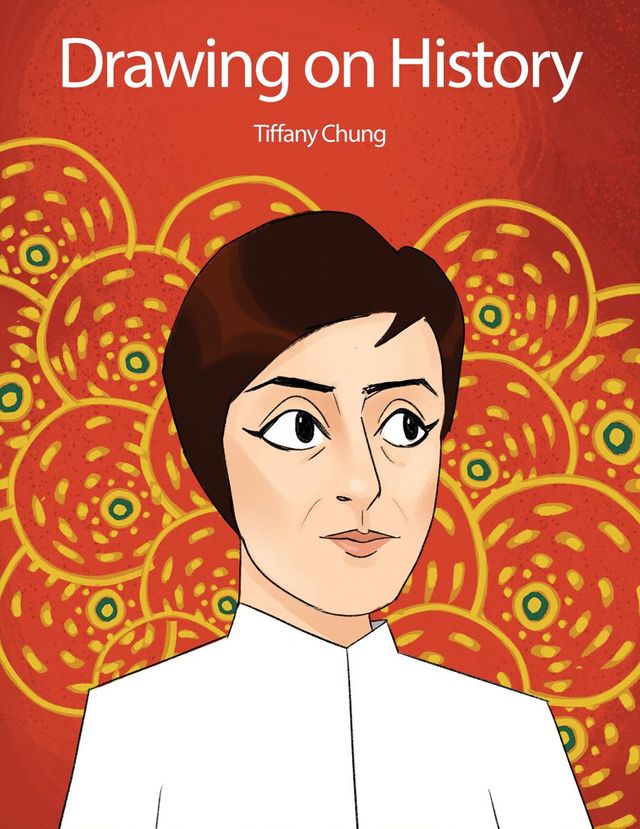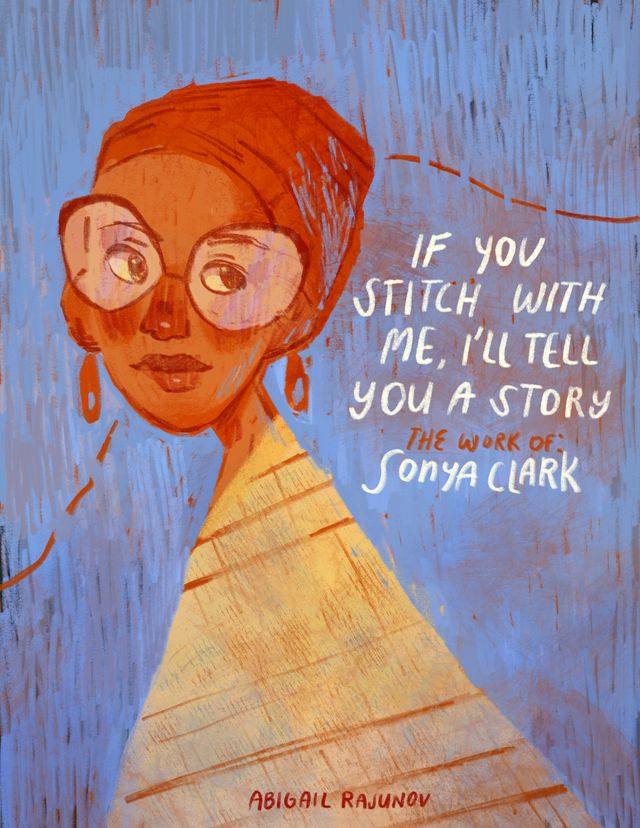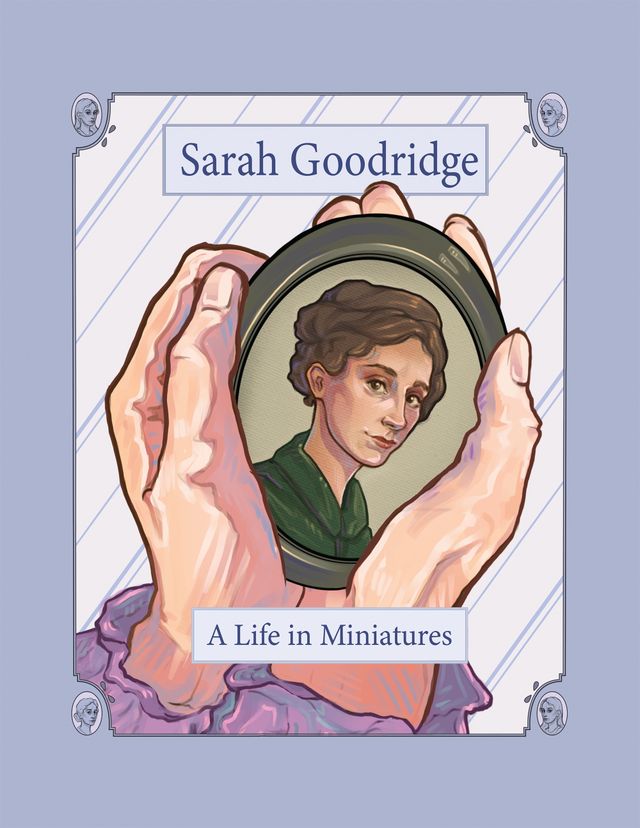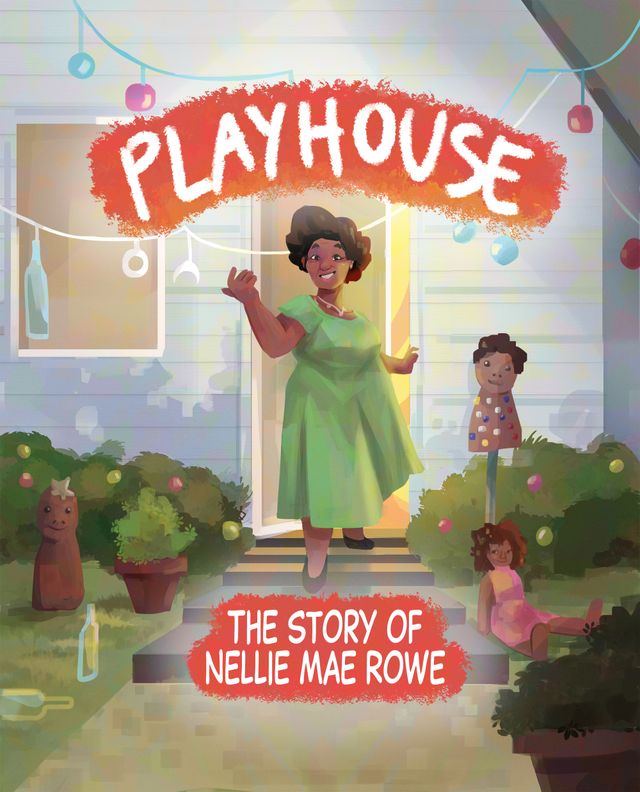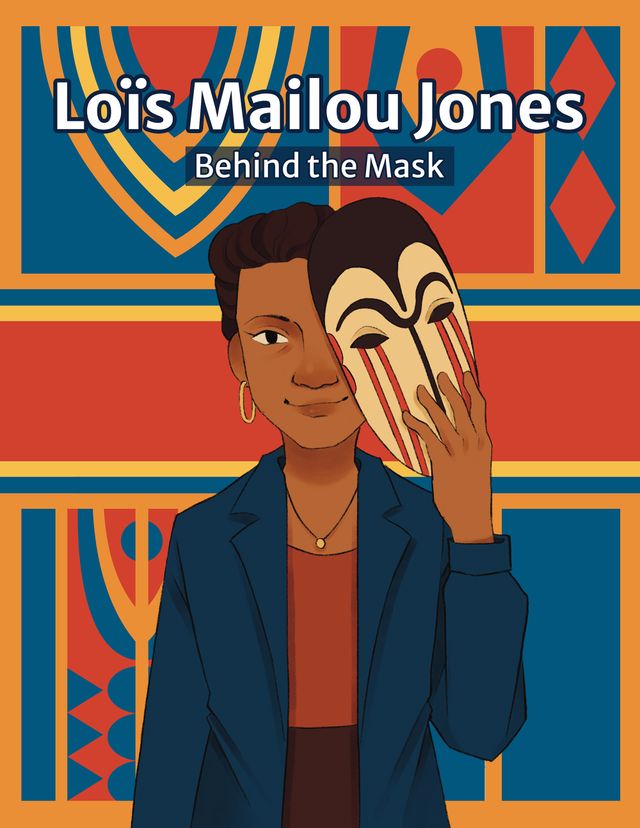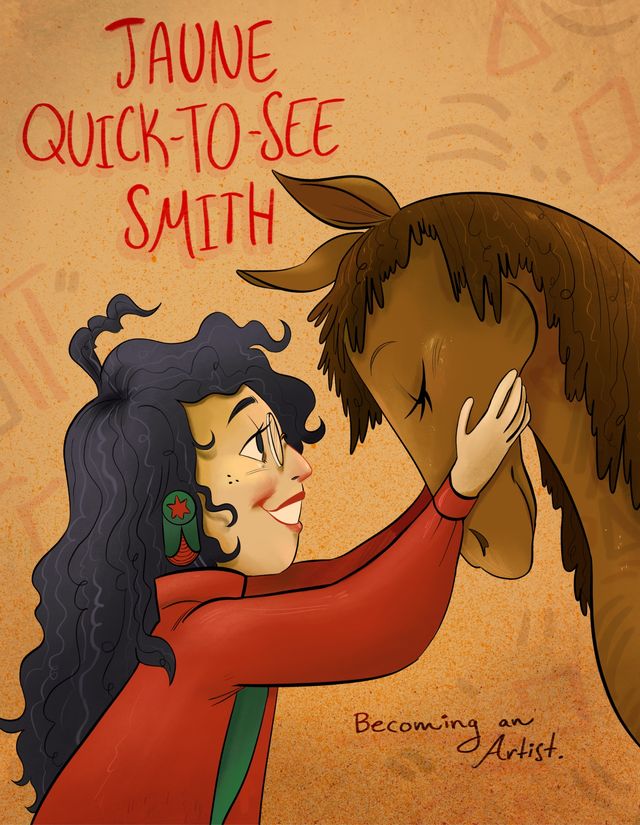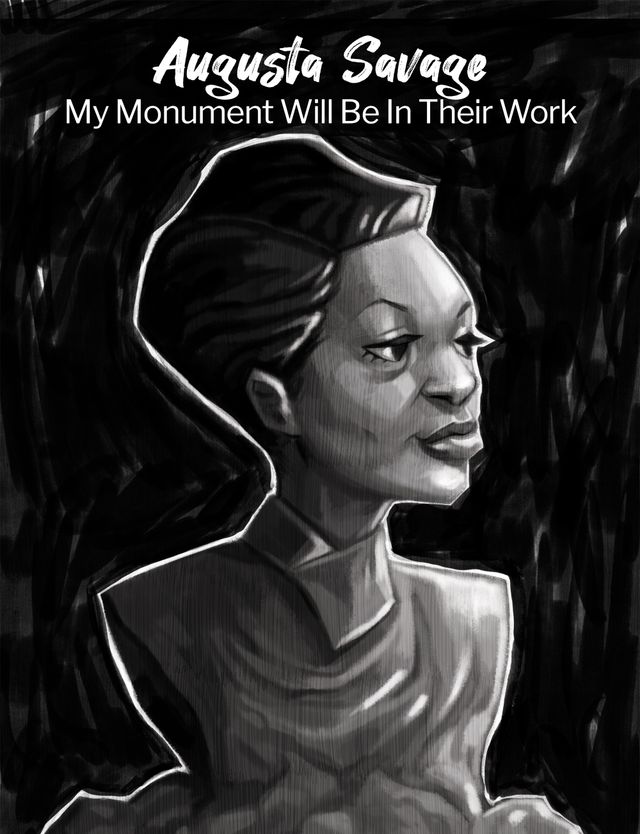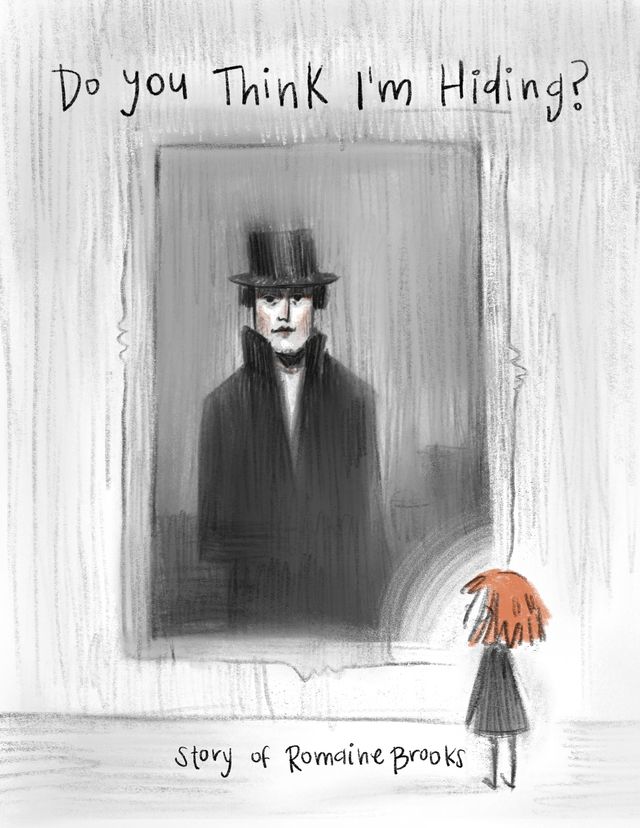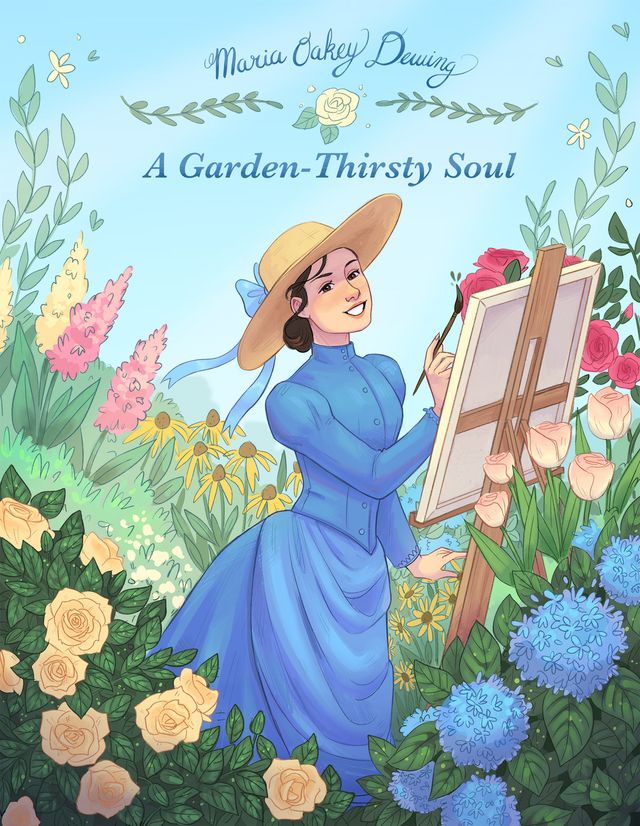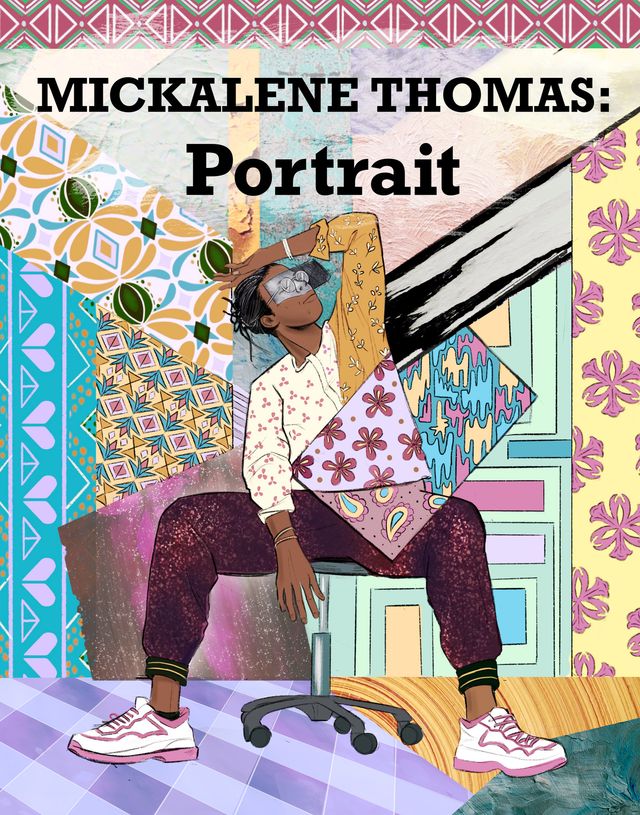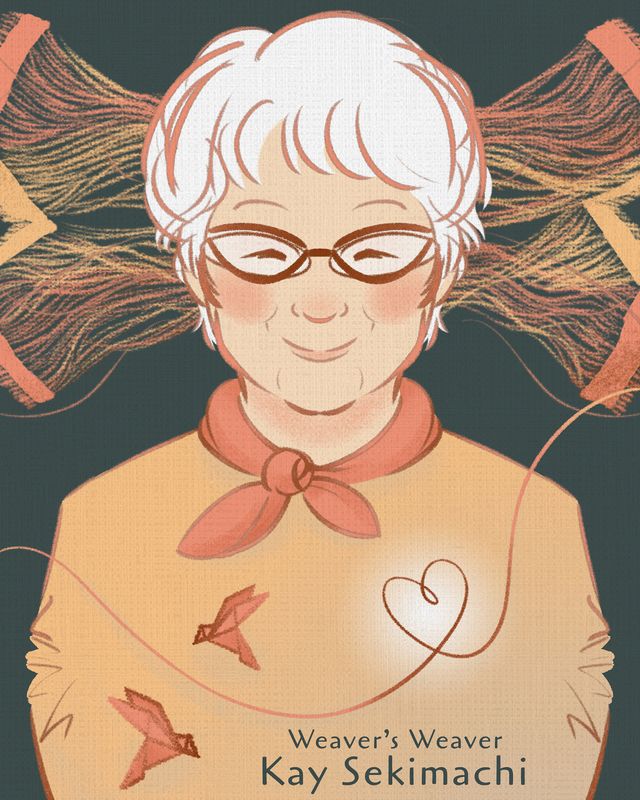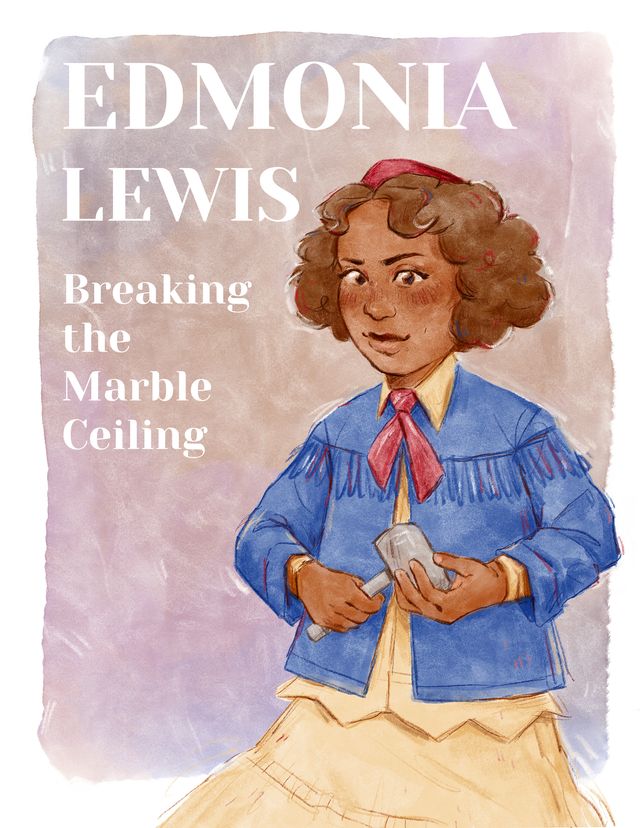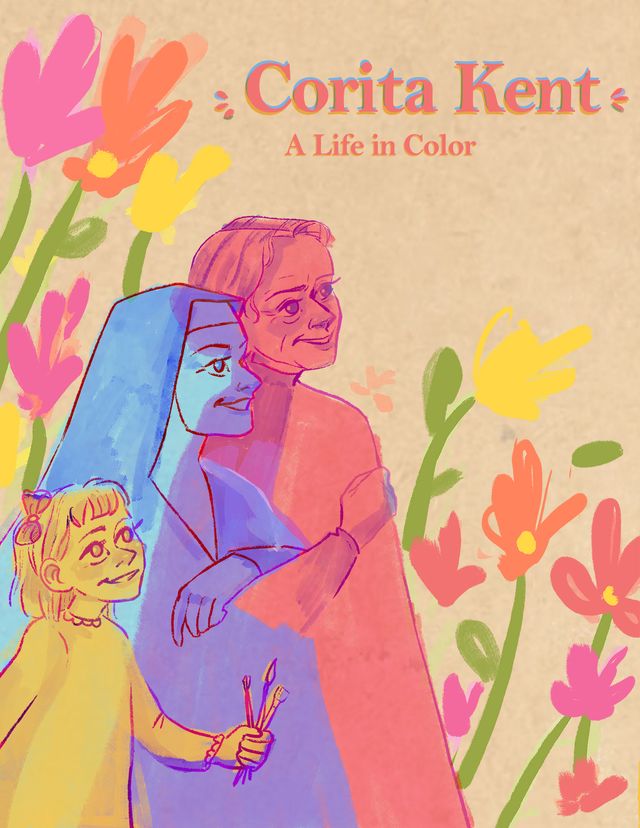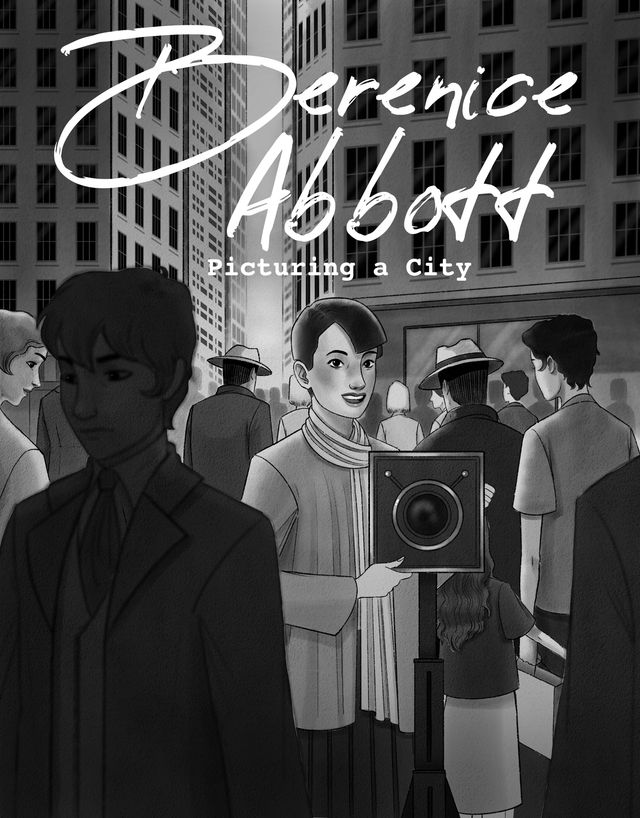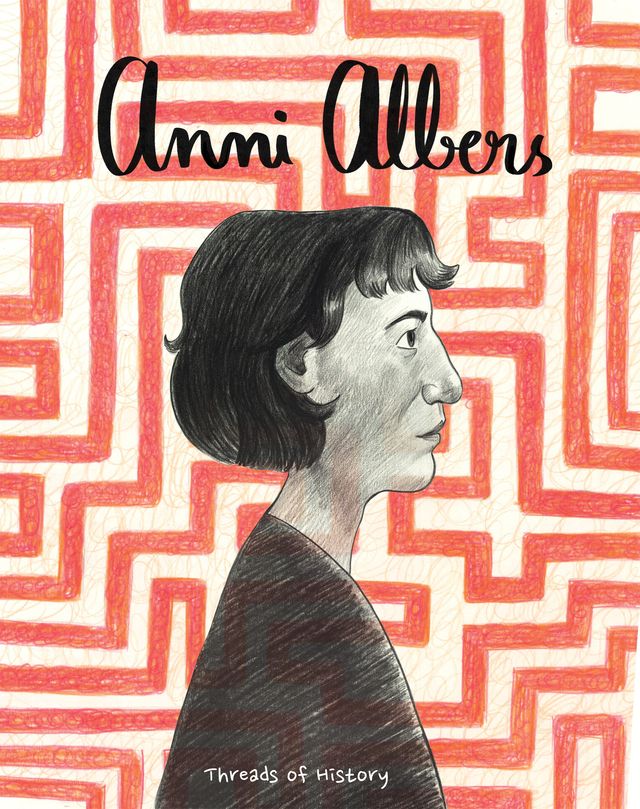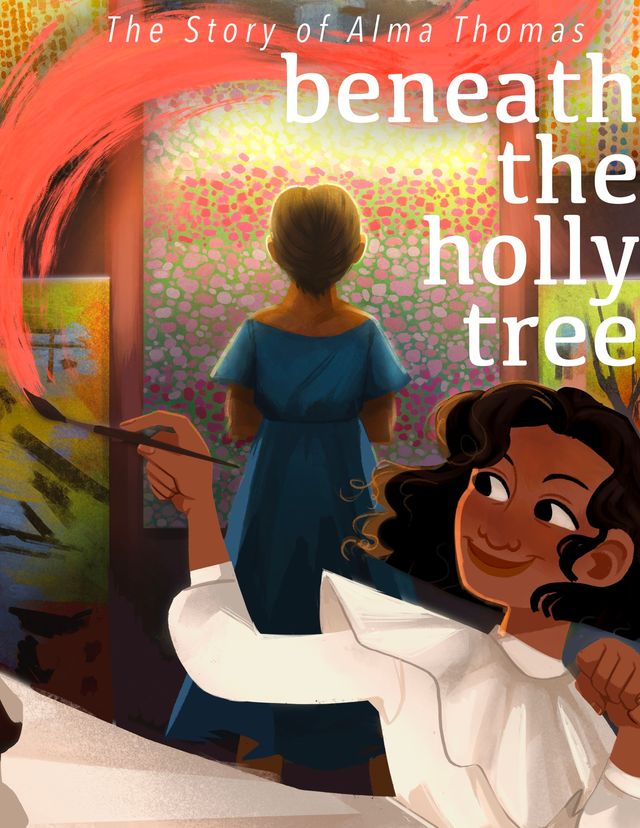An Overview
Tanya Aguiñiga is known for her community-based projects and activism that involve interactions at the border.
This comic is part of a series Drawn to Art: Tales of Inspiring Women Artists that illuminates the stories of women artists in the collection of the Smithsonian American Art Museum. Inspired by graphic novels, these short takes on artists’ lives were each drawn by a student-illustrator from the Ringling College of Art and Design.
We invite you to read the comic and share it with your friends and young people in your life.
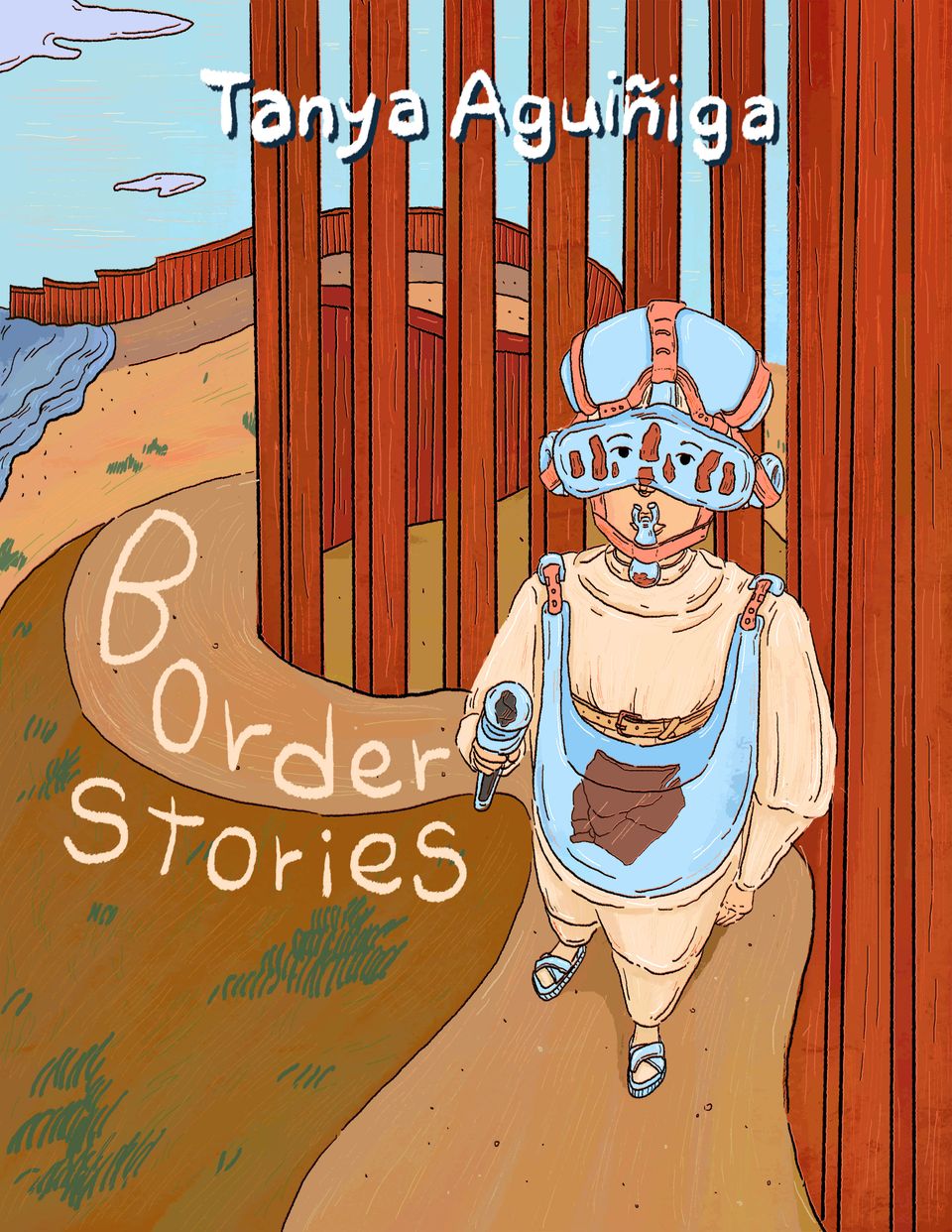
Cover
A woman in a complex suit made of glass, neoprene, metal, and leather stands in the center of the page. The suit is flesh-toned, with blue glass elements and pink straps holding it in place. She holds a glass torch in her right hand while her left hand rests at her side. Behind her is a large, rusted metal fence that winds its way into the background and through the ocean on the left side of the page. The fence posts are so tall behind the woman that they reach the top of the page. There is a dirt path running parallel to the fence amid an arid grass and sand landscape. A teal sky with periwinkle clouds is seen in the distance. White handwritten type at the top of the page reads: "Tanya Aguiñiga." Along the curve of the dirt path next to the figure, white text reads: "Border Stories."

Page 1
Background: This page is made up of three panels, one taking up the whole page, one sitting on top of this in the middle right, and one along the bottom of the page. Black text sits against the background in the first two panels and in a gray text box in the bottom panel.
Panel 1
A young girl sits on yellow dirt/sand. She has a light skin tone and straight brown hair pulled up into a pink bow with bangs across her forehead. She is wearing a pink T-shirt and blue jean overalls. She kneels, leaning to the right of the page, holding a stick in her right hand making squares in the sand. In front of her blue ocean waves come up onto the sand. Behind her is the same brown border fence seen on the cover and a bright blue sky with light blue clouds. Text above her reads: "Tanya Aguiñiga grew up in the United States/Mexico borderland."
Panel 2
A young Tanya sits at a wooden desk smiling in a classroom with orange walls. She has short straight brown hair and a pink bow and is wearing a short-sleeve green blouse. Her left hand is holding a gray book up on her desk and her right hand is held in the air. There is a window next to her that shows that same desert landscape with the border fence. Text reads: "She was born in San Diego and lived with her family in Tijuana. Every day, Tanya crossed the border to attend a public school in San Diego."
Panel 3
A young Tanya stands in the middle of the panel with her arms raised in confusion and her mouth open. She is wearing a pink dress with a light pink knit sweater that is unraveling. Behind her to the left are rolling brown mountains with the orange wooden border fence winding through them. To her right is the fence going across yellow sand and into the blue ocean. Orange question marks sit on either side of Tanya. At the top of the panel text reads: "As a child, Tanya found it hard to understand why being born on one side or the other of the border changed whether you were allowed to come and go safely."

Page 2
Background: This page is one large panel. There are two clear frosted text boxes with black text.
An adult Tanya stands in the center with her dark hair in a bun. She is wearing round glasses, a lime green long-sleeve shirt, and a red-and-white color-blocked smock. With her right hand she holds out a white card that says "AMBOS" and has a hot pink tassel tied to it. Behind her is the blue sky with orange wooden beams representing the fence. Surrounding her are large puzzle pieces in different shades of red and brown. The pieces show scenes of border crossing. To her right there is a sketch of someone walking, to her left there is a scene of the cars parked at the border fence, and below her is the silhouette of a family running with their belongings. Text in the upper left corner reads: "She began using her art to engage with her feelings about the border in a personal way, to open it up as a space for resistance, reflection, and mending. When anti-immigration sentiment. And policies were growing in the United States, she created community-based projects to help people understand the border in new ways." Text in the bottom right reads: "Tanya also needed to process her own relationship to the border, so she conceived a performance. She thought about how she could share her experience of 'metabolizing the trauma related to the fence' through all five of her senses. She wanted to explore her own reality of crossing the border again and again, wondering how her body could actually survive that."
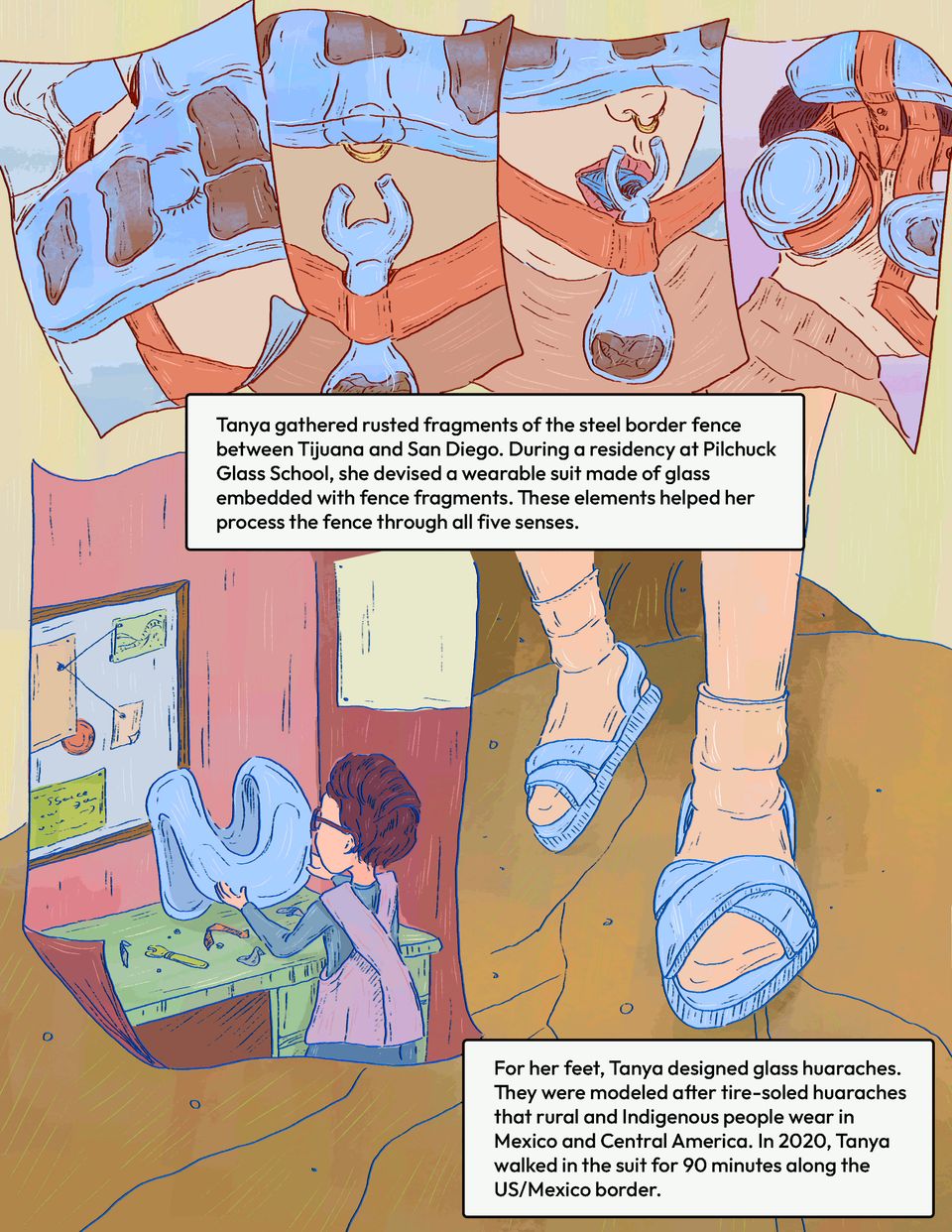
Page 3
Background: This page is made up of three panels. One across the top third, one on the bottom left, and one on the bottom right of the page. The top panel is broken up into four smaller panels. There are two cream text boxes with black text.
Panel 1
This panel is broken into four smaller panels. Each is a view of the border-crossing suit Tanya made, focusing on the five senses. On the left there is an image of Tanya closing her eyes with the glass goggles obscuring her face, referencing sight. The second image is of the glass goggles, covering her nose, and the glass mouthpiece, referencing smell. The third image is of the mouthpiece itself, which leads to a breath distiller, referencing taste. The image farthest to the right is of the glass headset which amplifies sound, referencing hearing. A text box under these panels reads: "Tanya gathered rusted fragments of the steel border fence between Tijuana and San Diego. During a residency at Pilchuck Glass School, she devised a wearable suit made of glass embedded with fence fragments. These elements helped her process the fence through all five senses."
Panel 2
Tanya stands facing away from the viewer, holding up the chest piece of the glass border suit. She has her hair cut short and is wearing purple glasses, a blue long-sleeved top, and a light-purple smock. In front of her is a green desk covered in glass fragments, metal, and tools. She is in an artist studio with pink walls. On the wall in front of her is a blue bulletin board with many papers and strings outlining her ideas.
Panel 3
This panel is a close-up of Tanya’s feet wearing the glass sandals she created. She walks toward the viewer on dry, brown, cracked dirt. The glass sandals are shiny light blue, and her feet are covered in light flesh-toned neoprene. Below this illustration text reads: "For her feet, Tanya designed glass huaraches. They were modeled after tire-soled huaraches that rural and Indigenous people wear in Mexico and Central America. In 2020, Tanya walked in the suit for 90 minutes along the US/Mexico border."
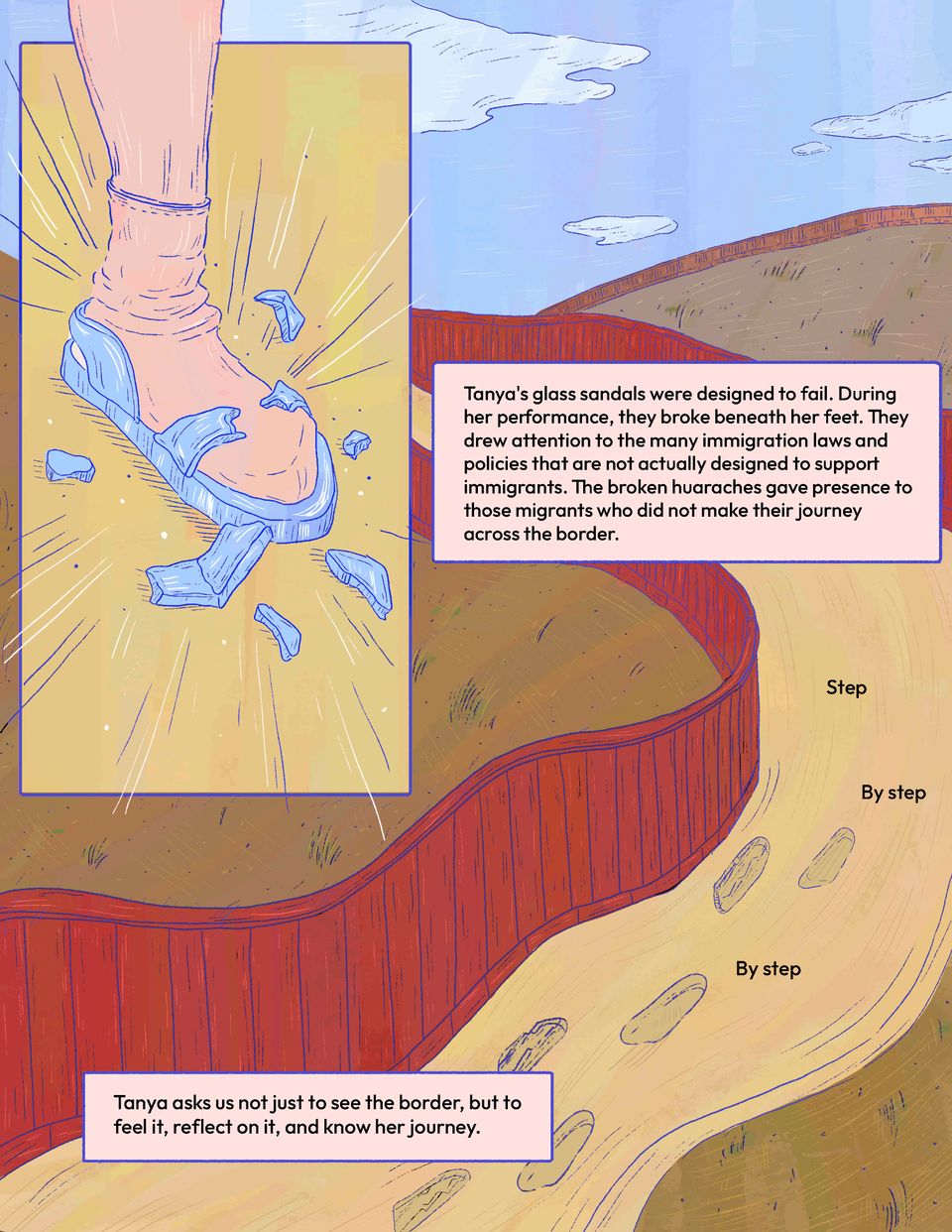
Page 4
Background: This page is one large panel with a smaller panel in the left corner. There are two light pink text boxes with black text.
Panel 1
The smaller panel in the upper left corner is a detail of Tanya smashing the glass huaraches as she walks. Her neoprene covered foot stomps down hard on the sandals and they crack into many smaller blue glass pieces which fly over the tan ground. Purple and white streaks come out from the foot to show the force she is using.
Panel 2
The larger illustration that covers the page is of the fence winding through a dry landscape. The fence is dark orange/red and winds into the distance below a bright blue sky. Arid dirt and grass hills roll along. The path that follows along the border is light tan and has imprints of footsteps walking along it. A text box in the upper right reads: "Tanya’s glass sandals were designed to fail. During her performance, they broke beneath her feet. They drew attention to the many immigration laws and policies that are not actually designed to support immigrants. The broken huaraches gave presence to those migrants who did not make their journey across the border." In between the footsteps in the tan dirt, black text reads: "Step… By step … By step." A text box at the bottom of the page reads: "Tanya asks us not just to see the border, but to feel it, reflect on it, and know her journey."

End page
A gradient from bright orange at the top to blue waves at the bottom sits behind an illustration of the broken glass huaraches. Text below the light blue huaraches reads: "Illustrated by Irene Pae."














